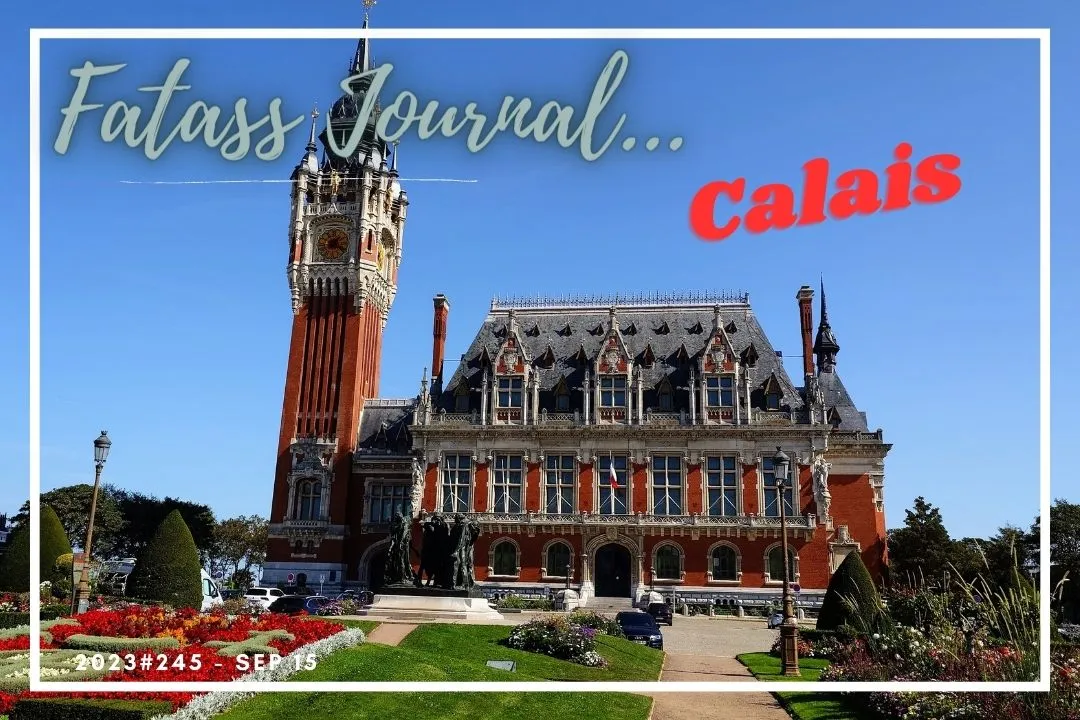
Wczoraj wybraliśmy się do Calais. Wiele razy przejeżdżałem w pobliżu kierując się w stronę Cote d'Opale, ale nigdy te miasto nie było celem naszych wypraw. Sam nie wiem co było głównym powodem takiego stanu rzeczy. Tym bardziej, że pamiętam dobrze radę angielskiego kolegi z pierwszego roku mojego pobytu w Belgii. Po tym jak stwierdziłem, że wybieram się w weekend nad morze, on mi podpowiedział, żeby wybrać się w okolice Calais lub Dunkierki, a odpuścić sobie belgijskie wybrzeże. Powód jest prozaiczny, Belgia posiada zaledwie 64 kilometry wybrzeża i w letnie weekendy większość Belgów jedzie się w tym kierunku. Francuzi mają znacznie dłuższe wybrzeże i nie ma tam takich tłumów. Wtedy zignorowałem jego radę i przekonałem się na własnej skórze, że miał rację. Później wielokrotnie wybierałem wypoczynek w okolicach Boulogne-sur-Mer na Cote d'Opale.
[ENG] Yesterday we went to Calais. I had passed close by many times on my way to the Cote d'Opale, but never made it a destination. I don't know what the main reason was. I remember the advice of an English colleague from my first year in Belgium. After I told him I wanted to go to the seaside for the weekend, he told me to go to the Calais or Dunkirk area and not to the Belgian coast. The reason is simple: Belgium has only 64 kilometres of coastline, and on summer weekends most Belgians head that way. The French have a much longer coastline and there are no such crowds. At the time I ignored his advice and found out for myself that he was right. Later, I always chose to rest near Boulogne-sur-Mer on the Côte d'Opale.
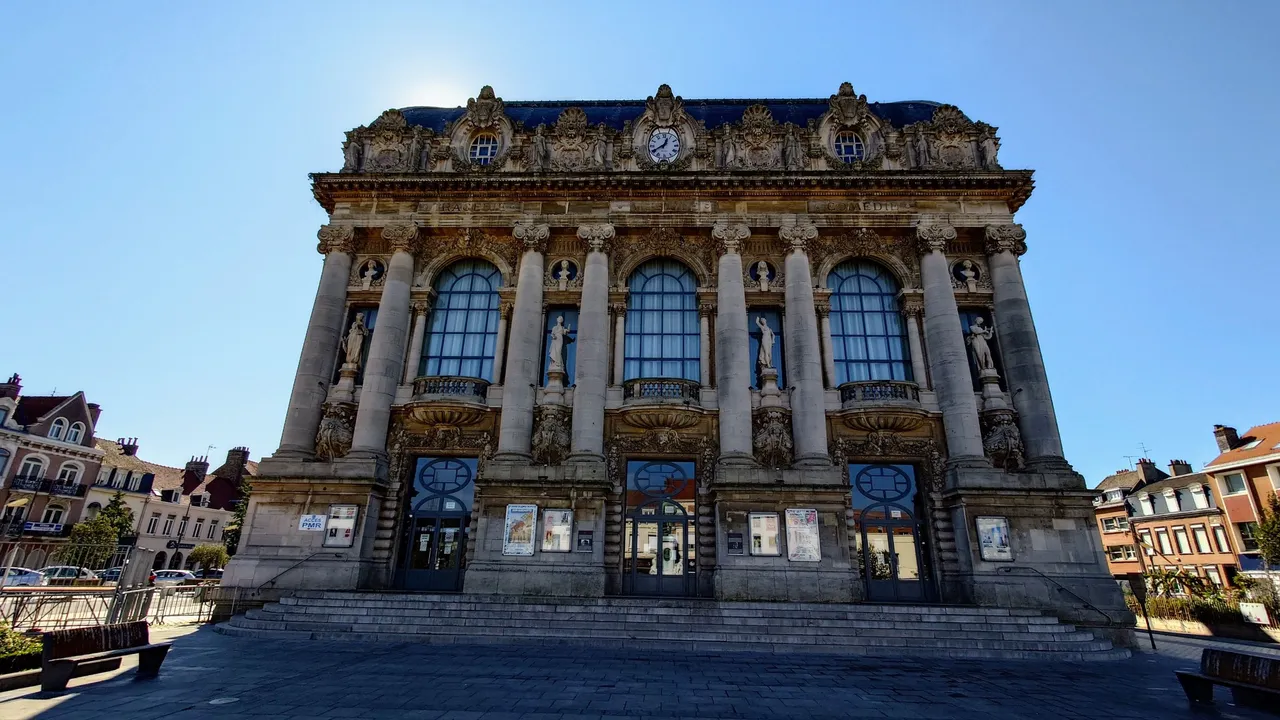
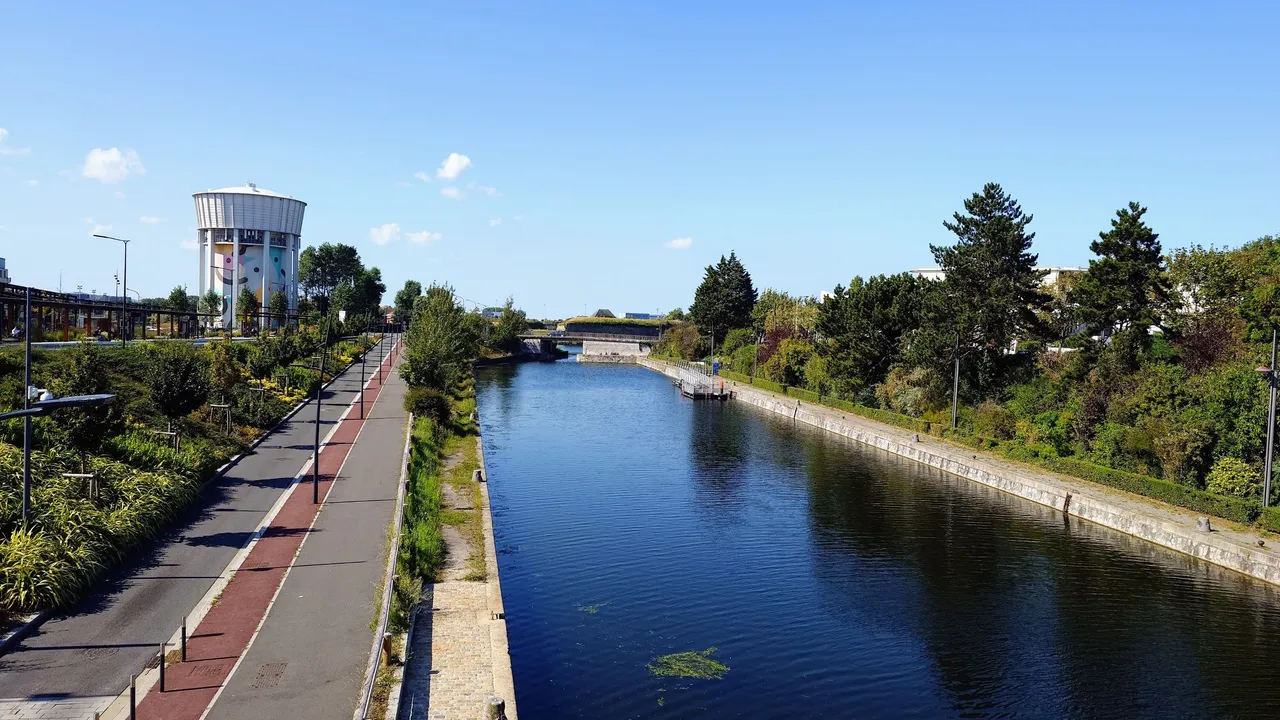
Od wieków Calais było strategicznym miastem łączącym kontynent europejski z wyspami brytyjskimi. Miasto znajduje się zaledwie 34 kilometry od angielskiego Dover, w związku z tym od średniowiecza było głównym portem i bardzo ważnym ośrodkiem transportu i handlu z Anglią. W XIV wieku po ponad rocznym oblężeniu miasto padło łupem angielskiego króla Edwarda III, panowanie anglików trwało przez ponad dwa wieki, dopiero w 1558 roku zostało odbite przez francuzów. W XX wieku zostało prawie całkowicie zniszczone w wyniku bombardowań niemieckich w 1940 roku, po zdobyciu zgliszcz Calais Niemcy zbudowali ogromne bunkry wzdłuż wybrzeża w ramach przygotowań do wystrzelenia rakiet w stronę Anglii.
[ENG] For centuries, Calais has been a strategic town linking mainland Europe with the British Isles. Located just 34 kilometres from Dover in England, it has been a major port and a very important centre for transport and trade with England since the Middle Ages. In the 14th century, after a siege of more than a year, the city fell to the English King Edward III, whose reign lasted more than two centuries, only to be recaptured by the French in 1558. In the 20th century, it was almost completely destroyed by German bombing in 1940; after capturing the ruins of Calais, the Germans built huge bunkers along the coast in preparation for launching rockets at England.
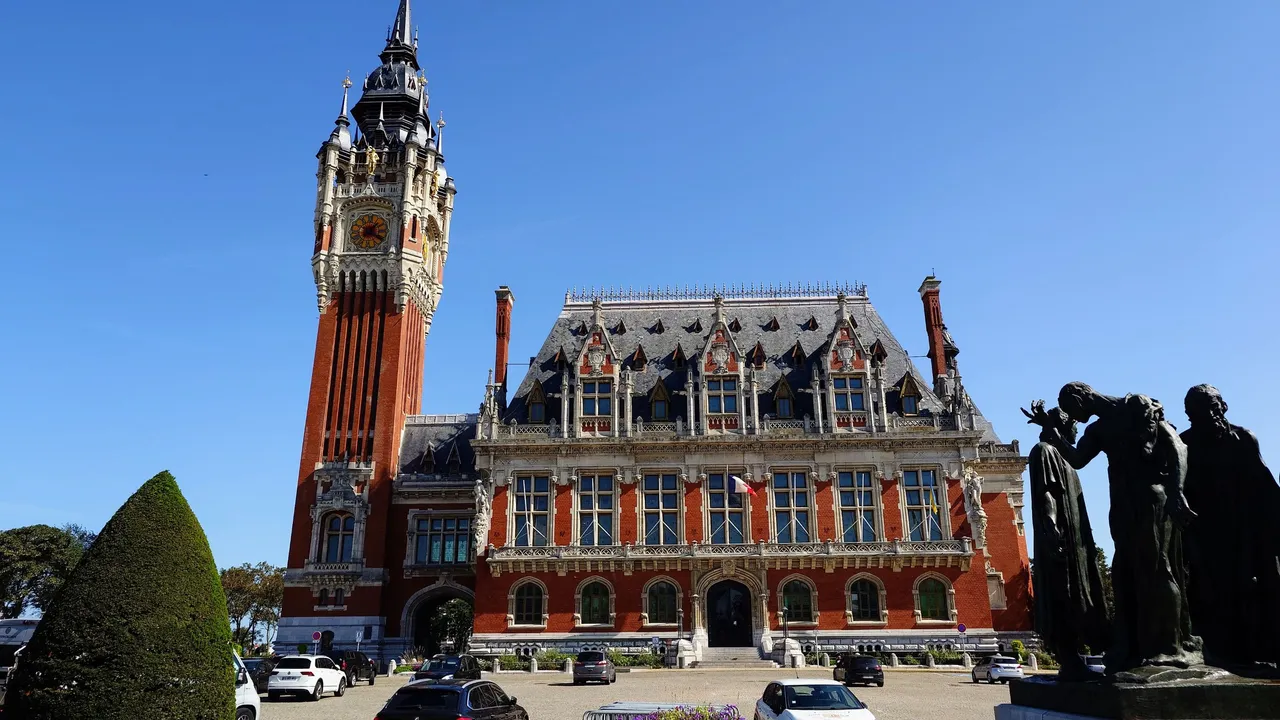
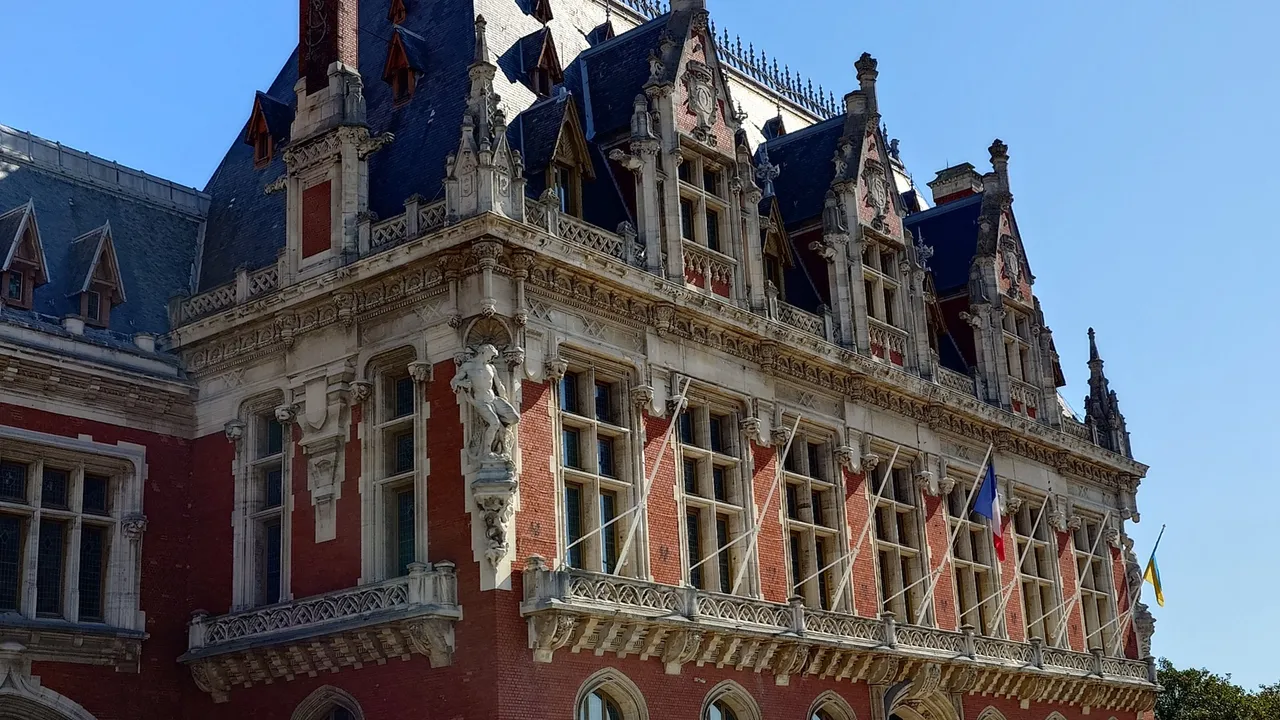
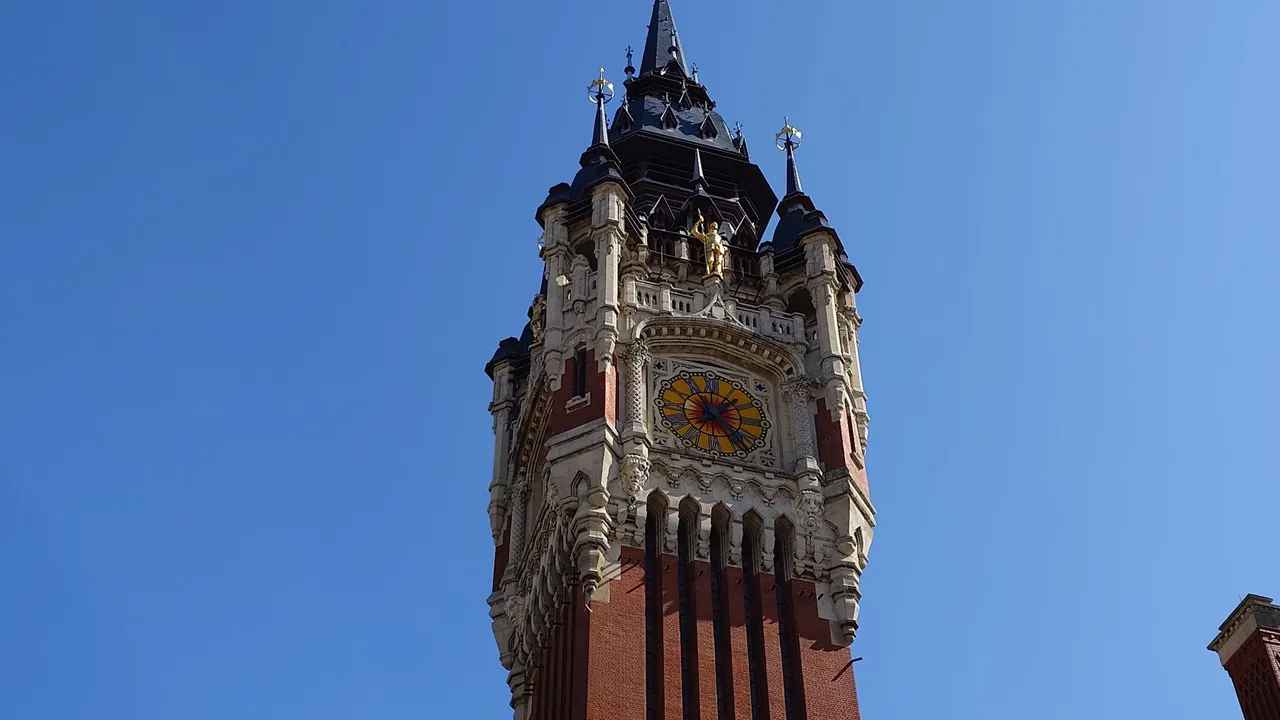
Zniszczenia wojenne sprawiły, że trudno szukać w Calais uroku dawnych flamandzkich portów. Jedynym, ale niezwykłym świadectwem świetności tego miasta jest budynek ratusza miejskiego Hôtel-de-ville. Został on zbudowany w stylu flamandzkiego renesansu w latach 1911-1925, dla upamiętnienia zjednoczenie miast Calais i Saint Pierre w 1885 r. Zdecydowanie jeden z najbardziej eleganckich zabytków w mieście, jego ozdobna wieża zegarowa o wysokości 74 metrów z dzwonnica są widoczne z morza i są chronione przez UNESCO. Przed ratuszem znajduje się pomnik Les Bourgeois de Calais "Mieszczanie z Calais", rzeźby Auguste'a Rodina upamiętniającej sześciu dzielnych mężczyzn, którzy mieli zostać straceni przez Edwarda III w 1347 roku po zdobyciu miasta.
[ENG] The ravages of war have made it difficult to find the charm of the old Flemish ports in Calais. The only remarkable reminder of the city's splendour is the Hôtel de Ville town hall. It was built between 1911 and 1925 in the Flemish Renaissance style to commemorate the unification of the towns of Calais and Saint Pierre in 1885. One of the most elegant monuments in the city, its ornate 74-metre clock tower and belfry are visible from the sea and are protected by UNESCO. In front of the town hall is the monument to Les Bourgeois de Calais, a sculpture by Auguste Rodin commemorating the six brave men who were executed by Edward III in 1347 after the capture of the town.
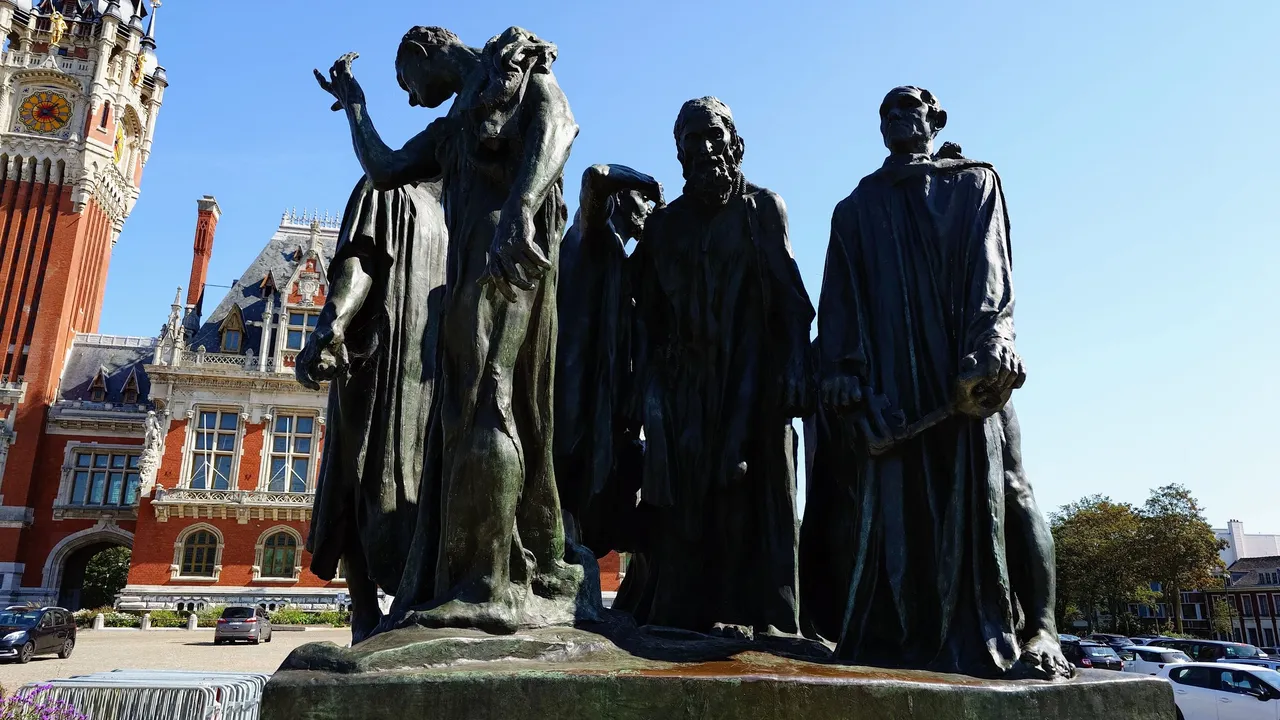
W centrum starego miasta znajduje się Place d'Armes, na którym stoi Tour du Guet, czyli wieża strażnicza, konstrukcja zbudowana w XIII wieku, a w zasadzie jej pozostałości. Niestety ten plac został odbudowany w nowoczesnym stylu, czyli został zabetonowany, nie stanowi on żadnej atrakcji turystycznej. Dużo ciekawiej jest poza placem, na południowy wschód od Place d'Armes znajduje się kościół Notre-Dame, zbudowany podczas angielskiej okupacji Calais. Prawdopodobnie jest to jedyny kościół zbudowany w angielskim stylu prostopadłościennym w całej Francji.
[ENG] In the centre of the old town is the Place d'Armes, on which stands the Tour du Guet, or Watchtower, a structure built in the 13th century, or rather the remains of it. Unfortunately, this square has been rebuilt in the modern style, that is, it has been covered with concrete; it is not a tourist attraction. Much more interesting is beyond the square, southeast of the Place d'Armes, the church of Notre-Dame, built during the English occupation of Calais. It is probably the only church in France built in the English Perpendicular style.

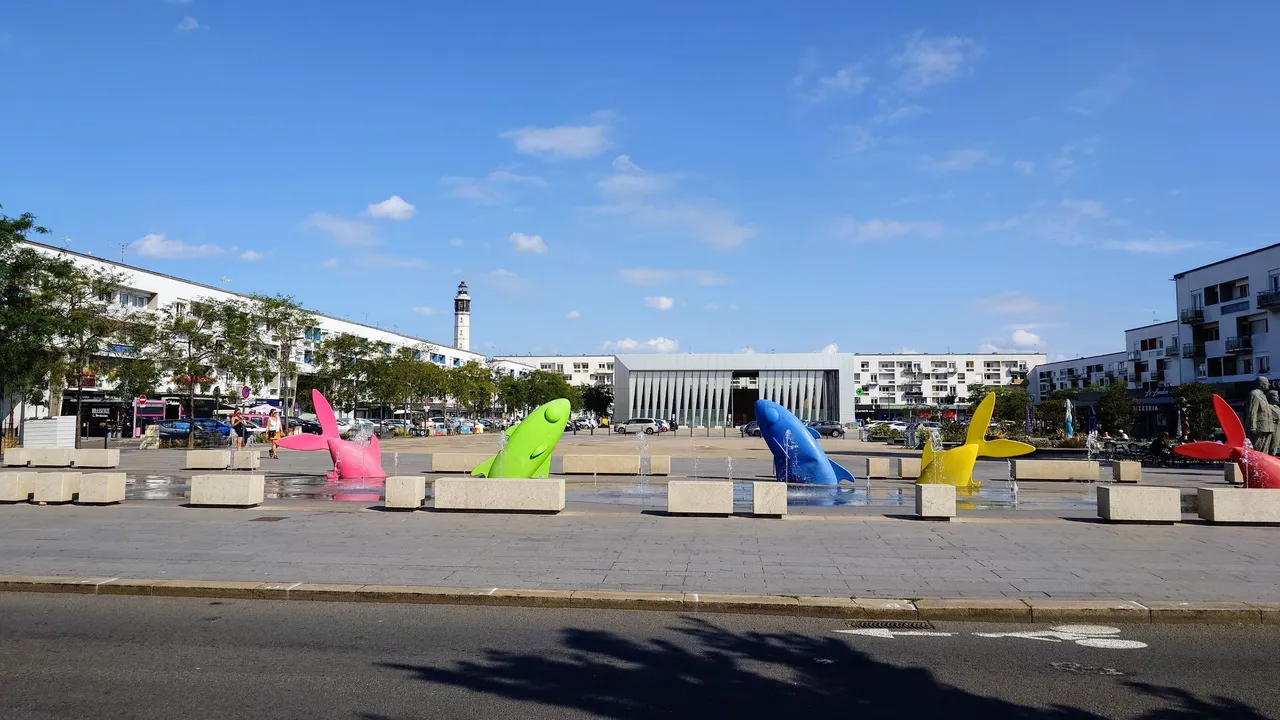
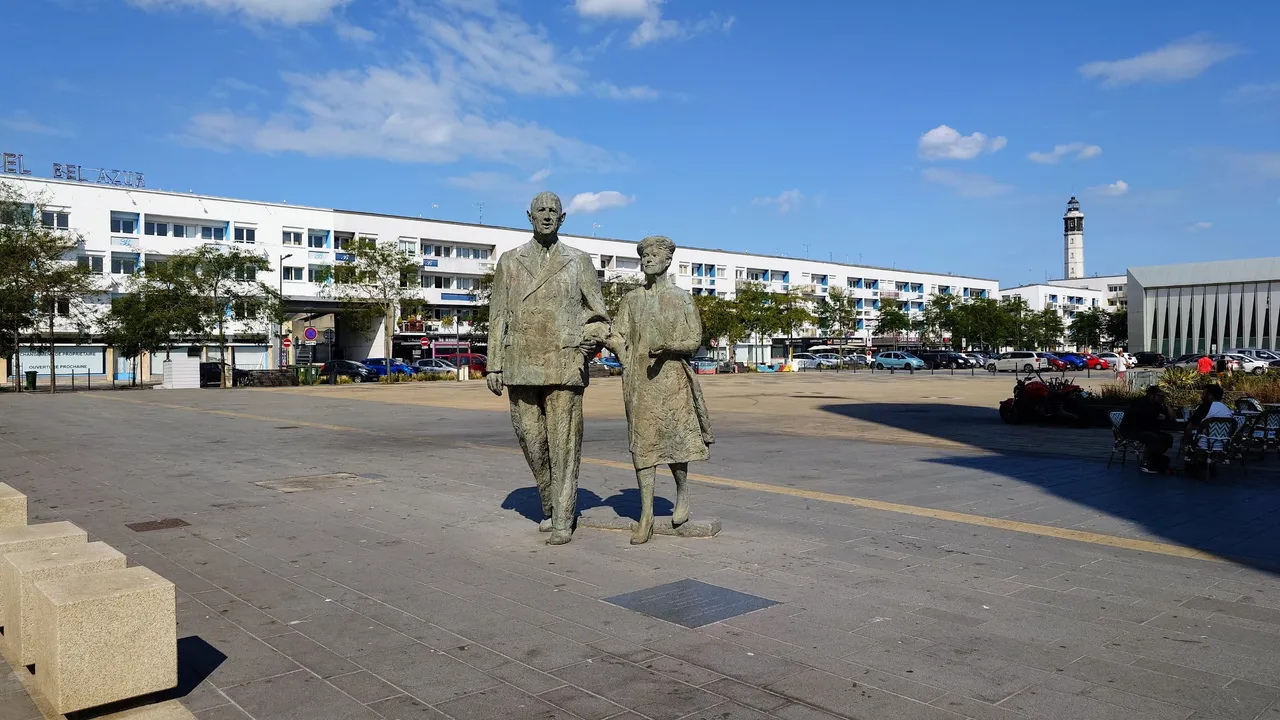
Niestety nie można było zobaczyć wnętrza kościoła, a bardzo byłem tego ciekawy. Można było przejść po ogrodach otaczających budynek. Tuż obok kościoła powstał ciekawy budynek na życzenie króla Ludwika XIV według projektu mistrza Vaubana. W 1691 roku zbudowano cysternę o pojemności 1800 metrów sześciennych na deszczówkę, która miała spływać z dachów kościoła.
[ENG] Unfortunately, it was not possible to see the inside of the church, and I was very curious about that. You could walk around the gardens that surround the building. Next to the church, an interesting building was built at the request of King Louis XIV to a design by the master Vauban. In 1691, a cistern with a capacity of 1800 cubic metres was built to collect rainwater from the roofs of the church.
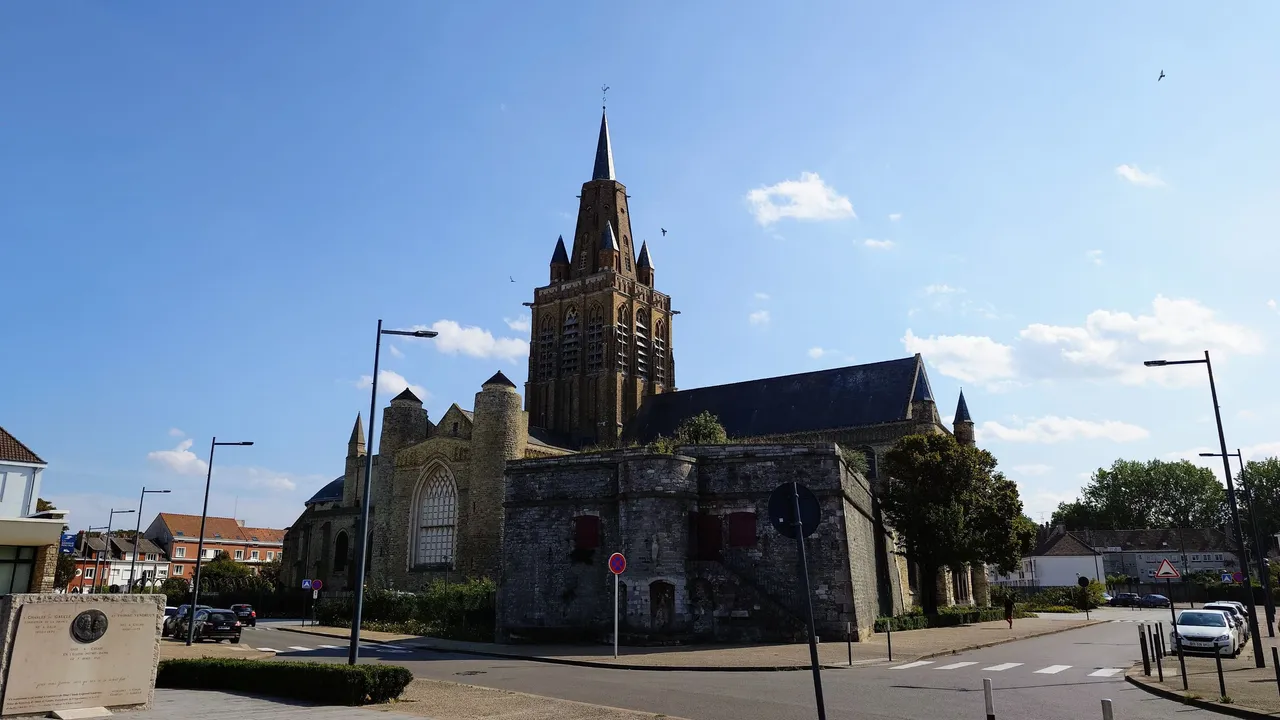
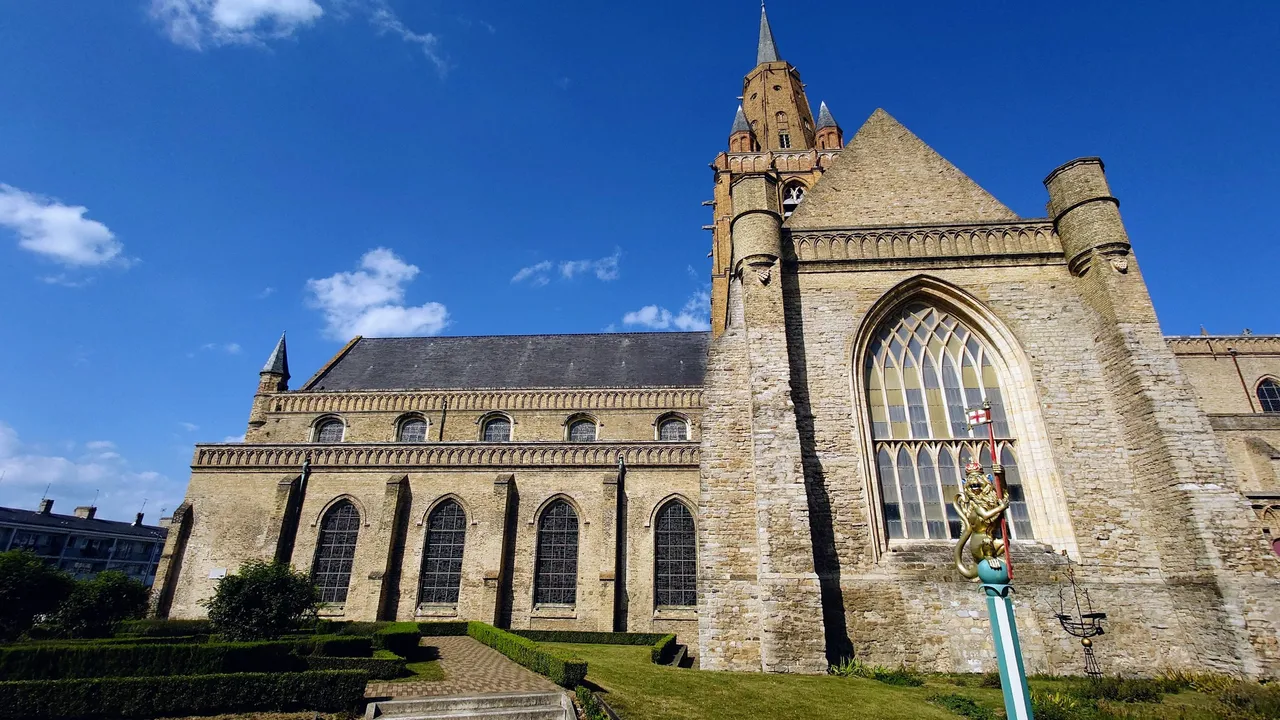
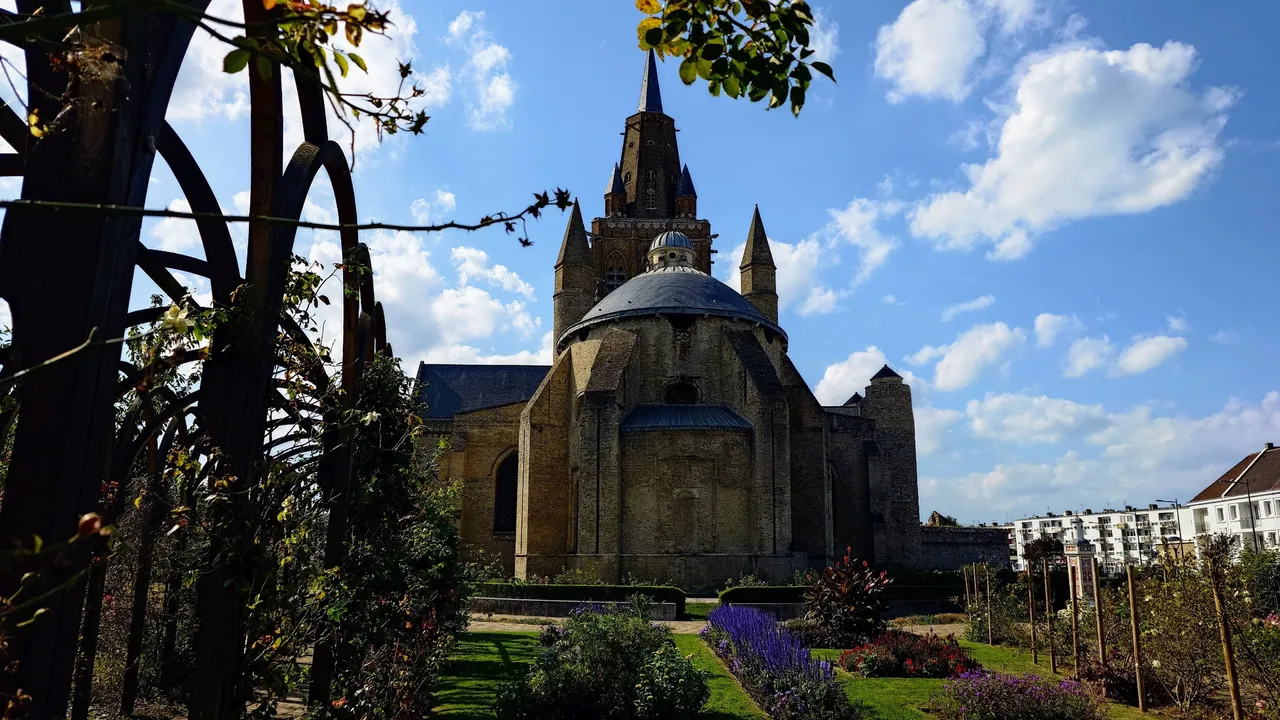
Kilka kroków dalej w stronę wybrzeża znajduje się latarnia morska, "Le phare de Calais" została zbudowana w 1848 roku. Wieża ma wysokość 55 metrów i na szczyt prowadzą 271 schody. Latarnię można zwiedzać po wykupieniu biletu za 5 euro. Warto pokonać 271 stopni, żeby z góry spojrzeć na całe miasto. A przy pogodzie takiej jak wczoraj można dostrzec białe klify angielskiego wybrzeża.
[ENG] A few steps further towards the coast is the lighthouse, 'Le phare de Calais', built in 1848. The tower is 55 metres high and 271 steps lead to the top. The lighthouse can be visited by buying a ticket for €5. It is worth climbing the 271 steps to get a view of the whole city from the top. And on a clear day like yesterday, you can see the white cliffs of the English coast.
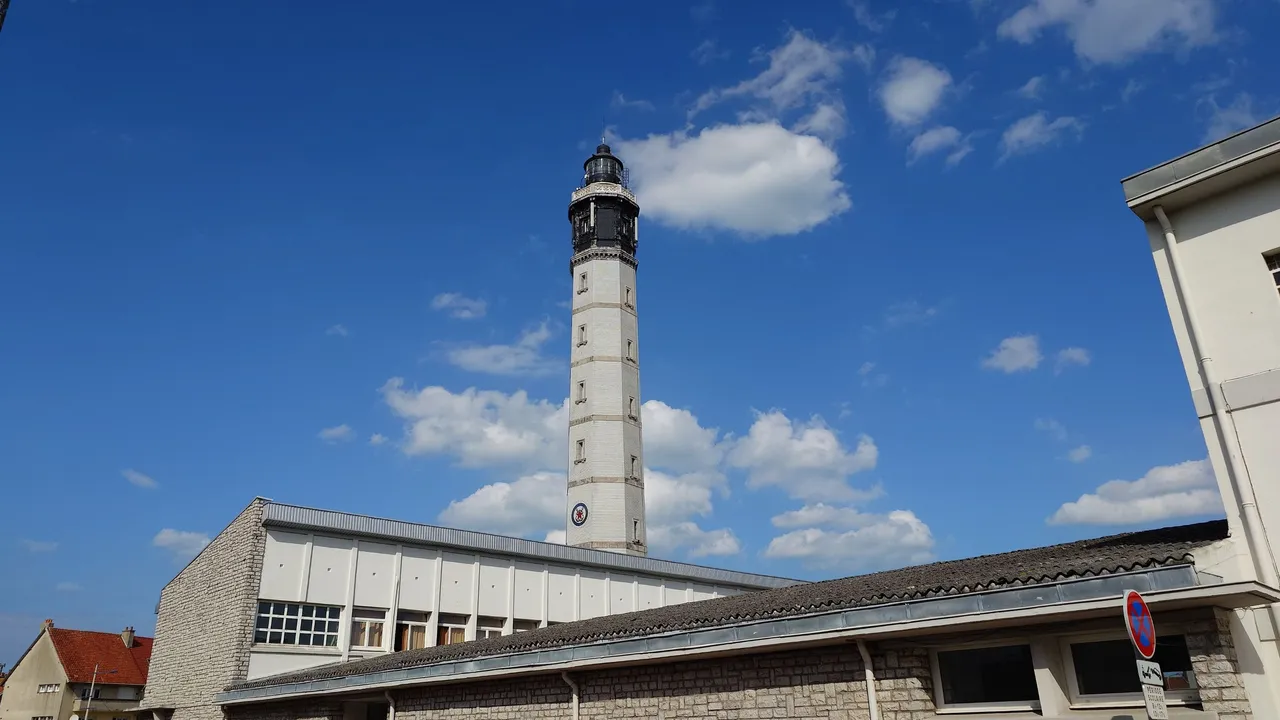
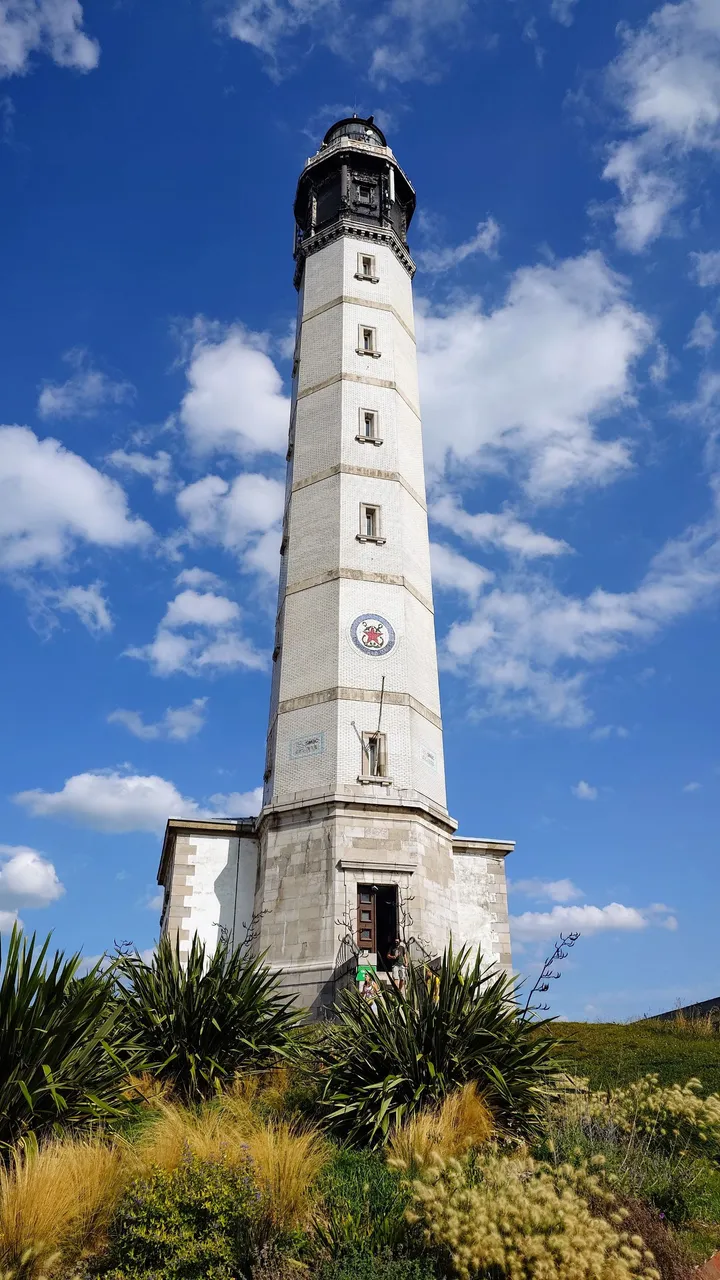
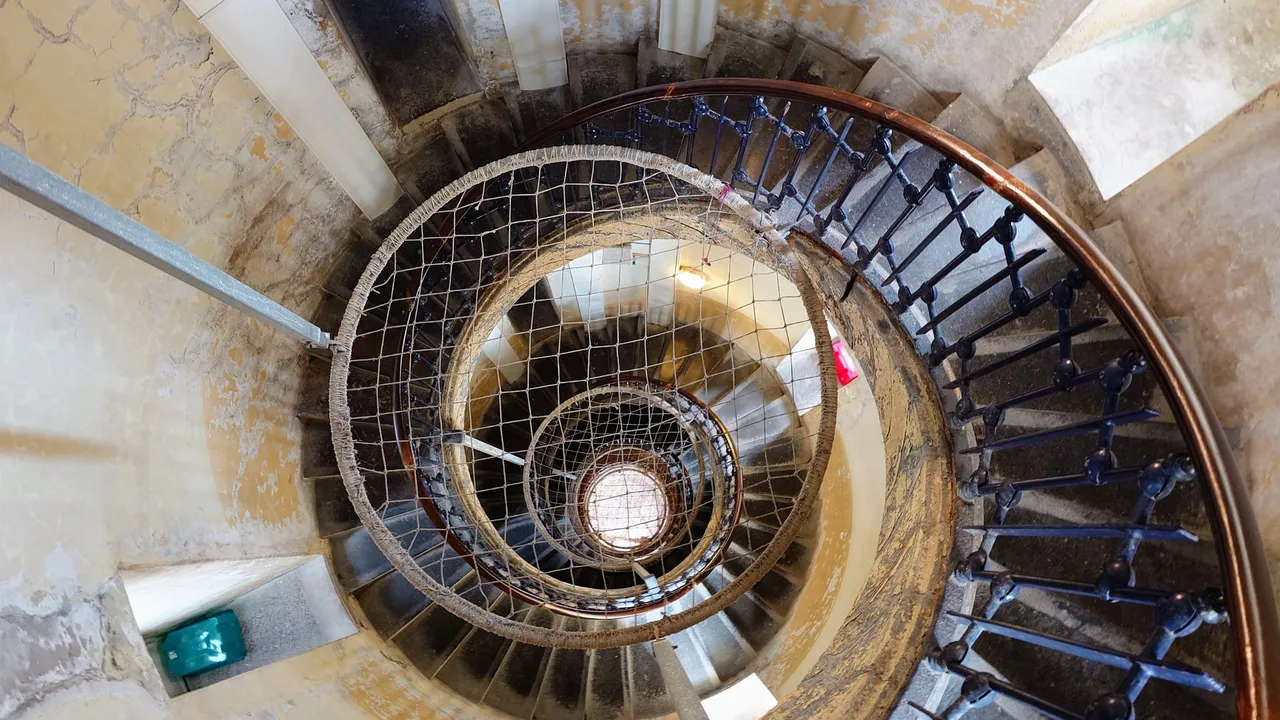


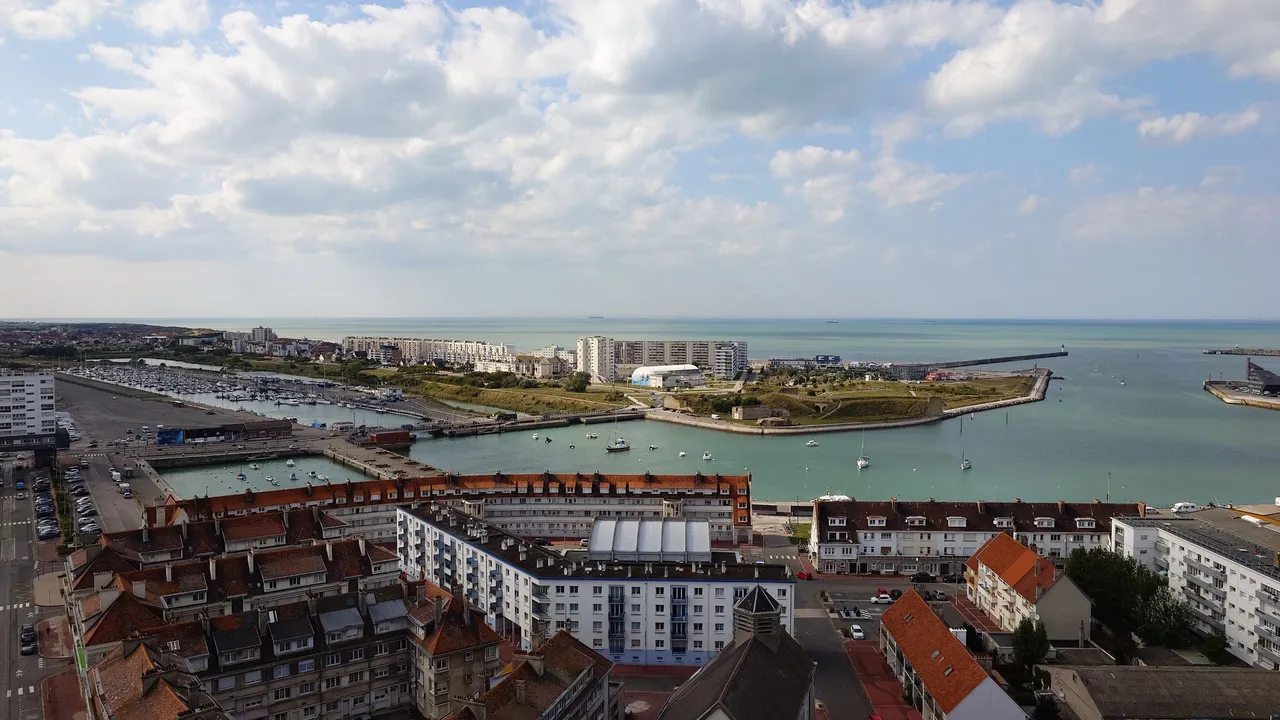

Wprost z latarni poszliśmy w stronę portu i plaży w Calais. W basenie portowym wokół zacumowanych łodzi pływała jedna motorówka. Napis na burcie świadczył, że to "nauka pływania", czyli taka nauka jazdy ale na wodzie. Po zrobieniu dwóch kółek wokół portu i jednym niezbyt udanym cumowaniu do pomostu, instruktor najwyraźniej zdecydował, że kursant jest gotowy ruszyć na miasto morze. Ciekawy był widoczny w tle budynek, który od strony portu sprawia wrażenie kilku połączonych bliźniaków, ale to tylko złudzenie, bo to jest taki długi trzypiętrowy blok mieszkalny.
[ENG] We walked straight from the lighthouse to the harbour and beach of Calais. In the harbour basin there was a motorboat floating around the moored boats. The writing on the side said that it was a 'learn to swim', a kind of learning to drive, but on water. After two circles around the harbour and a not-so-successful mooring to the pier, the instructor apparently decided that the student was ready to move on to the
citysea. What was interesting was the building visible in the background, which from the harbour side gives the impression of several connected twins, but this is just an illusion as it is such a long three-storey apartment block.
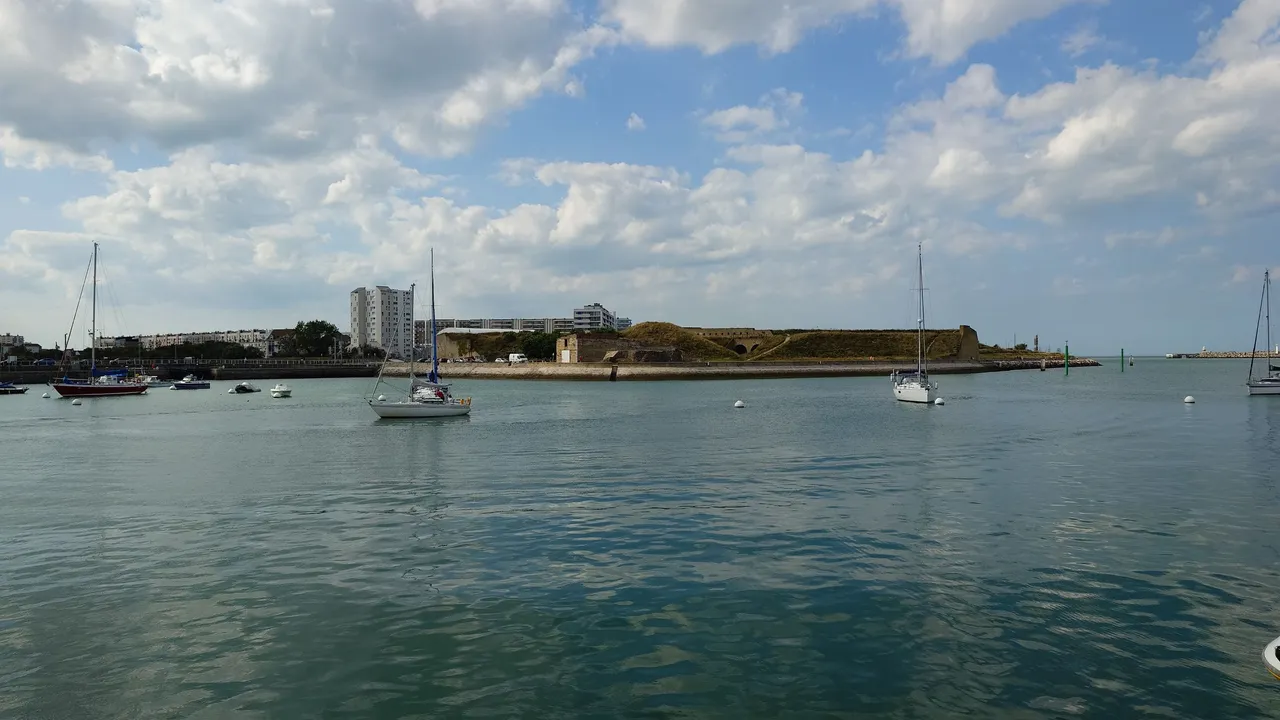
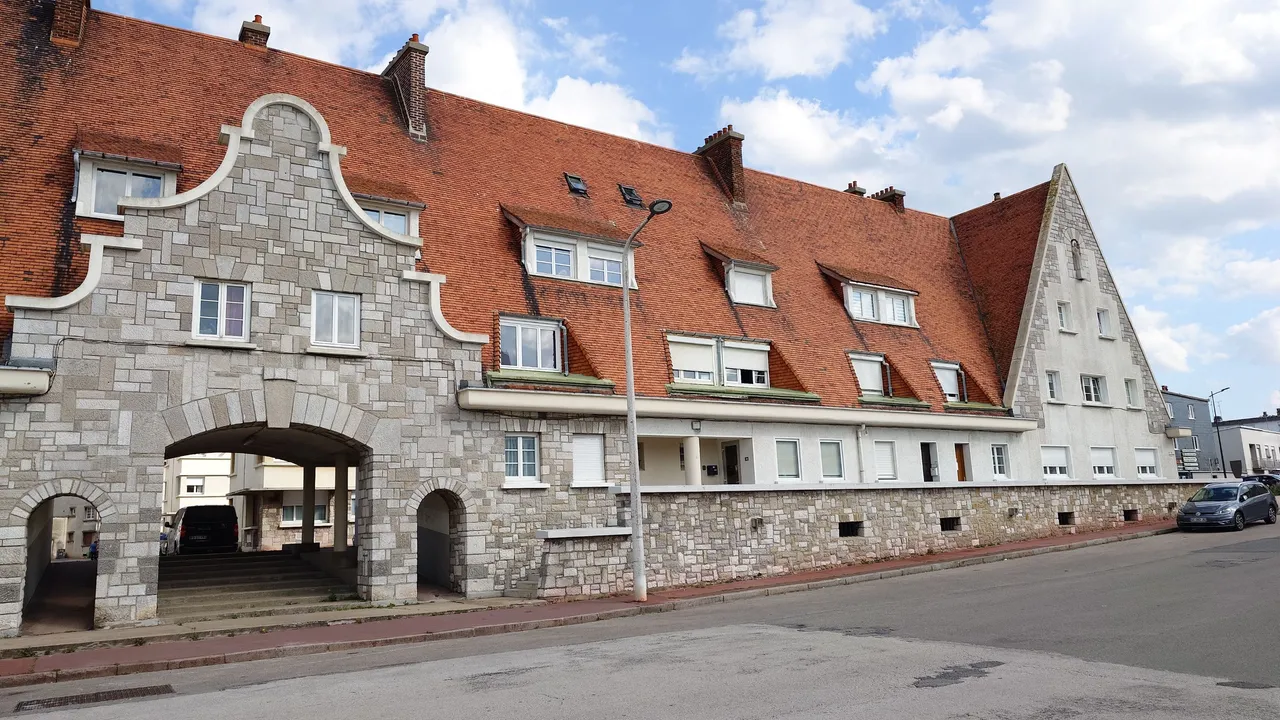
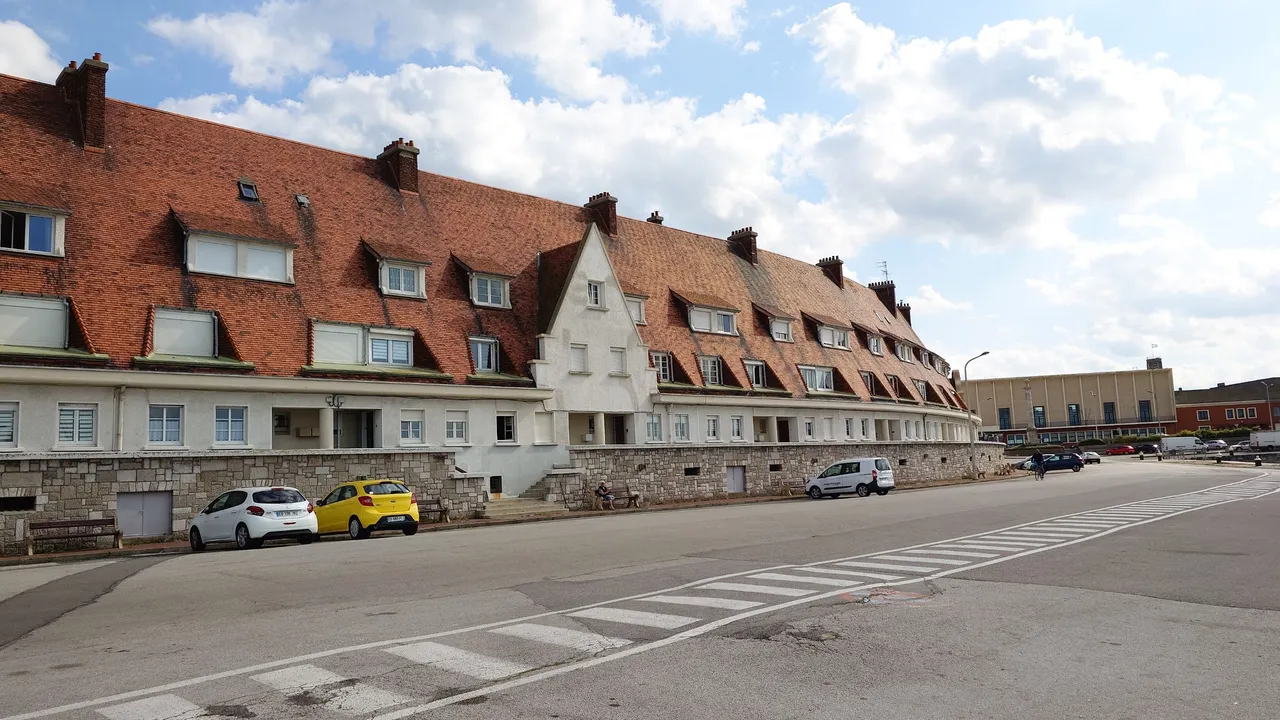
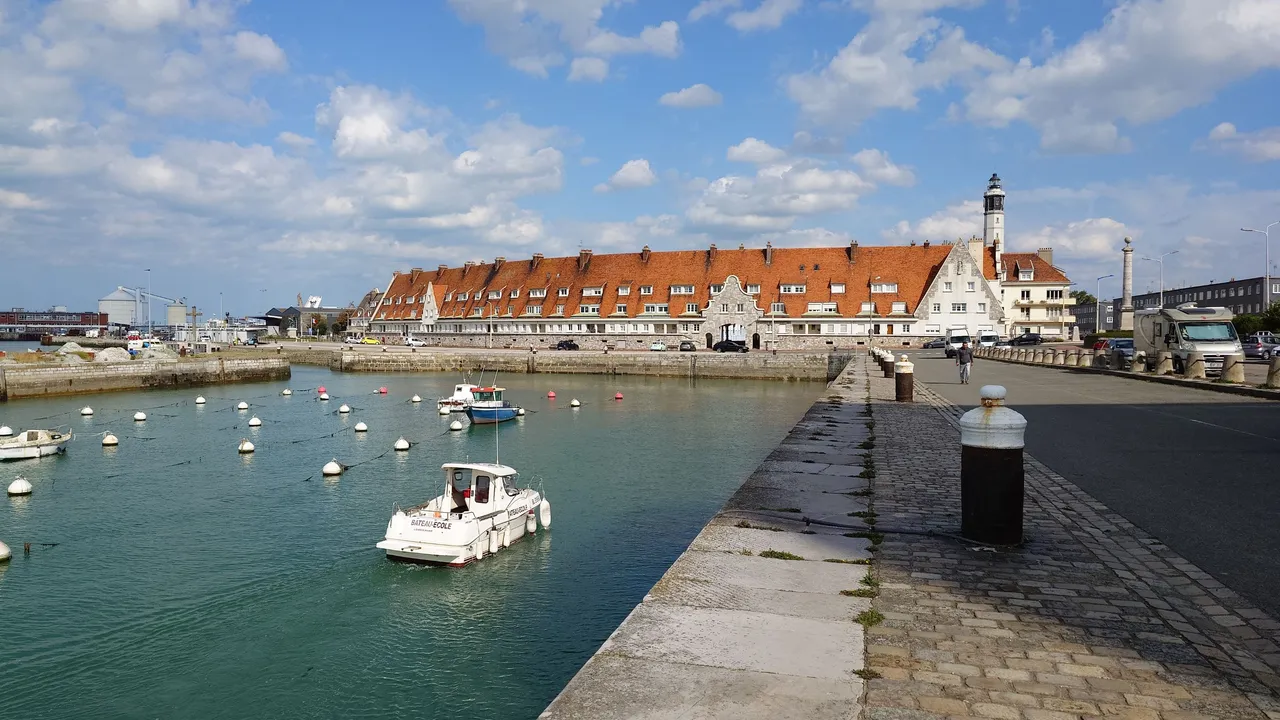
Najbardziej podobała nam się plaża, a w zasadzie deptak. Chwilę odpoczęliśmy na jednej z ławek, błogo spoglądając na morze. Poszliśmy jeszcze długim pomostem w stronę radiolatarni, która jest jednocześnie wejściem do portu w Calais. Szybko jednak wracaliśmy na deptak, bo okazało się, że szaleje tam... smok.
[ENG] What we enjoyed most was the beach, or rather the promenade. We rested for a while on one of the benches and looked out over the sea. We walked along another long pier towards the radio beacon, which is also the entrance to the port of Calais. We quickly returned to the promenade, however, as it turned out that a .... was a dragon.
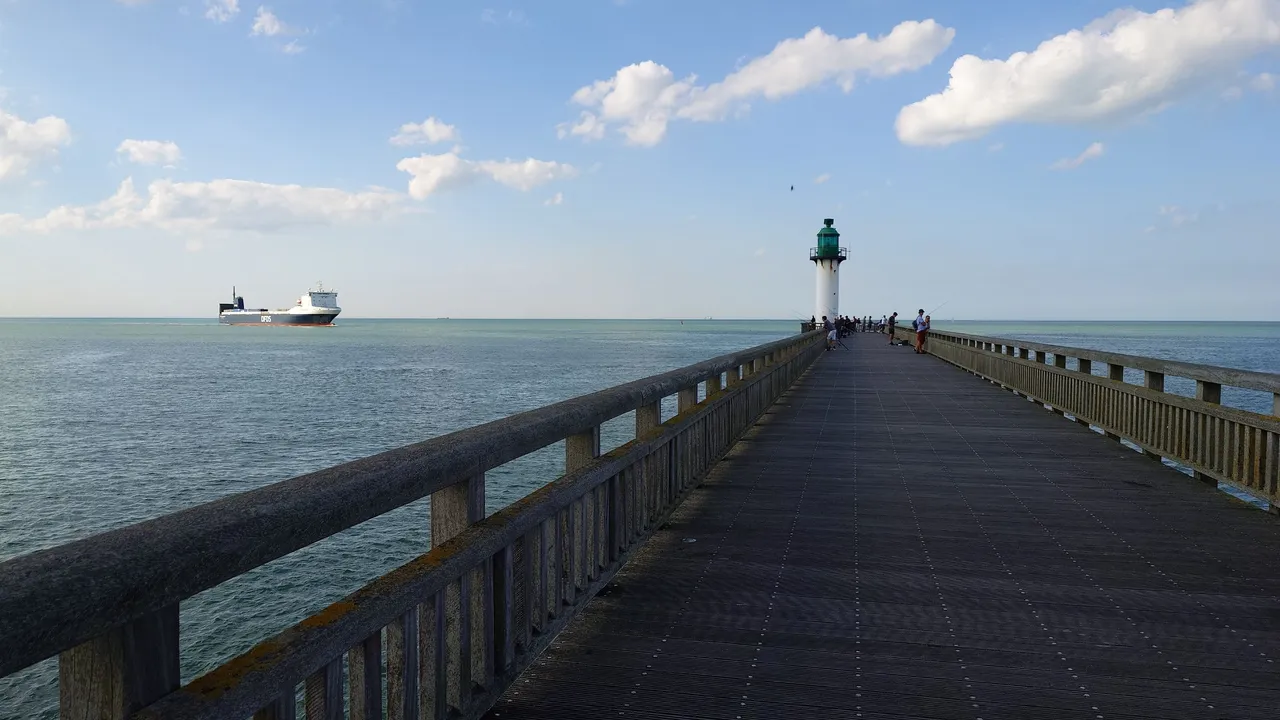

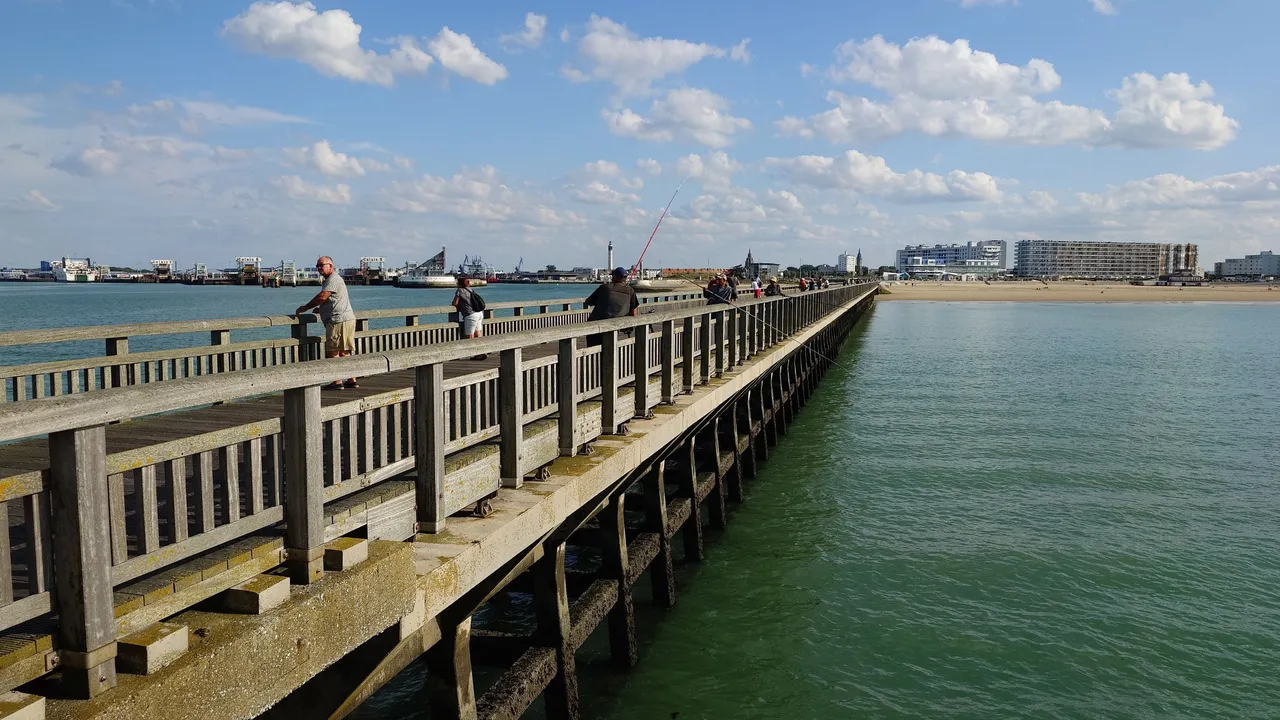

Przyznam się, że kojarzyłem tylko, że gdzieś blisko plaży jest smok. Myślałem, że to jakaś konstrukcja przypominająca smoka wawelskiego z Krakowa. Idąc w stronę plaży widziałem tą konstrukcję "zaparkowaną" pod dachem, byłem smutny z tego powodu, bo myślałem, że jest w remoncie. Okazało się, że jest to miejsce zbiórek dla pasażerów smoka, bo można wykupić przejażdżkę na grzbiecie potwora. Mniej więcej co godzinę smok wyrusza w podróż po nadmorskiej promenadzie. Wygląda to naprawdę imponująco i myślę, że dużo ciekawiej jest być na lądzie, gdzie dobrze wszystko widać, nawet to jak od czasu do czasu smok zieje ogniem.
[ENG] I have to admit that I only thought that there was a dragon somewhere near the beach. I thought it was some sort of structure resembling the Wawel dragon in Krakow. As I walked towards the beach I saw this structure "parked" under a roof, I was sad because I thought it was being renovated. It turned out to be a meeting place for dragon passengers, as you can buy a ride on the back of the monster. Every hour or so the dragon makes its way along the seafront. It looks really impressive, but I think it's much more interesting to be on land, where you can see everything, even how the dragon breathes fire from time to time.
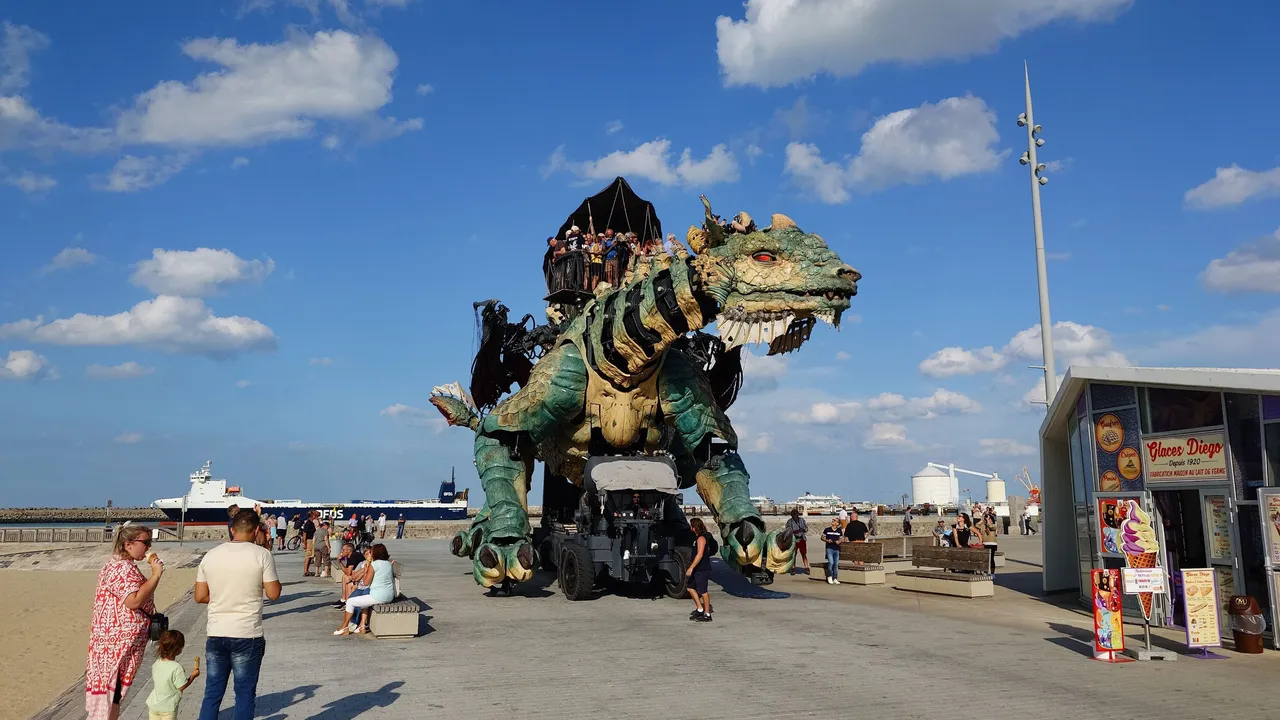

Nadmorska promenada zrobiła na nas ogromne wrażenie, w porównaniu do Ostendy, to Calais jest zdecydowanie bardziej ciekawe. Zadziwia też mnogość atrakcji dla każdego, kto lubi aktywnie spędzić czas nad morzem. Ogromny skatepark i kilka placów zabaw dla dzieci w różnym wieku. Plaża w Calais to dobry punkt startowy do wypraw po nadmorskich wydmach w stronę Cap Blanc Nez.
[ENG] The seafront impressed us; compared to Ostend, Calais is definitely more interesting. There are also many attractions for those who like to be active by the sea. There is a huge skate park and several playgrounds for children of all ages. The beach at Calais is a good starting point for trips along the coastal dunes towards Cap Blanc Nez.
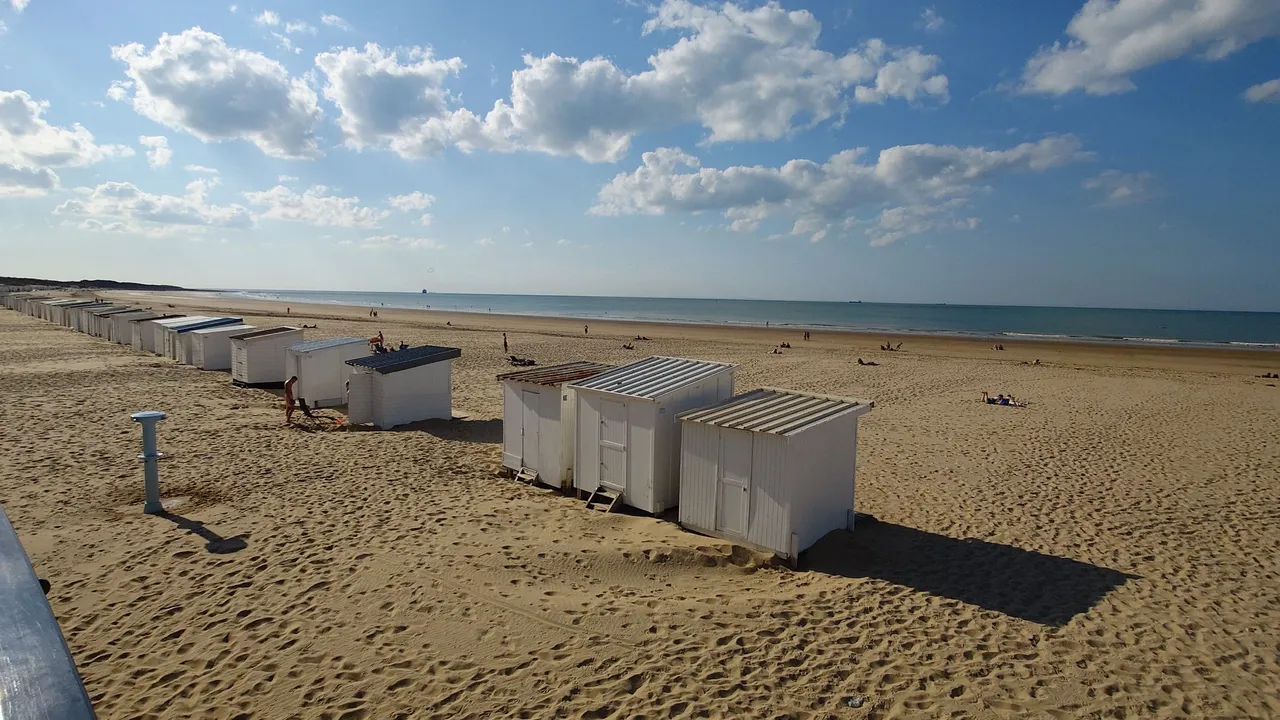
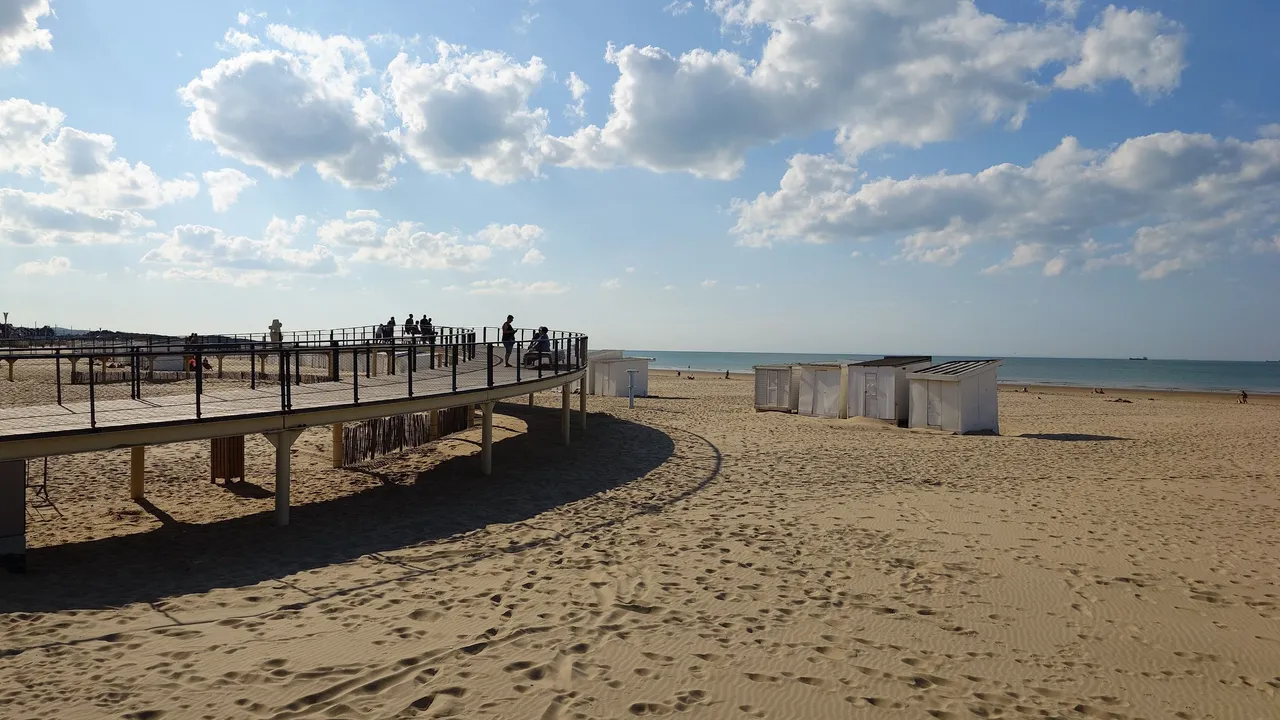
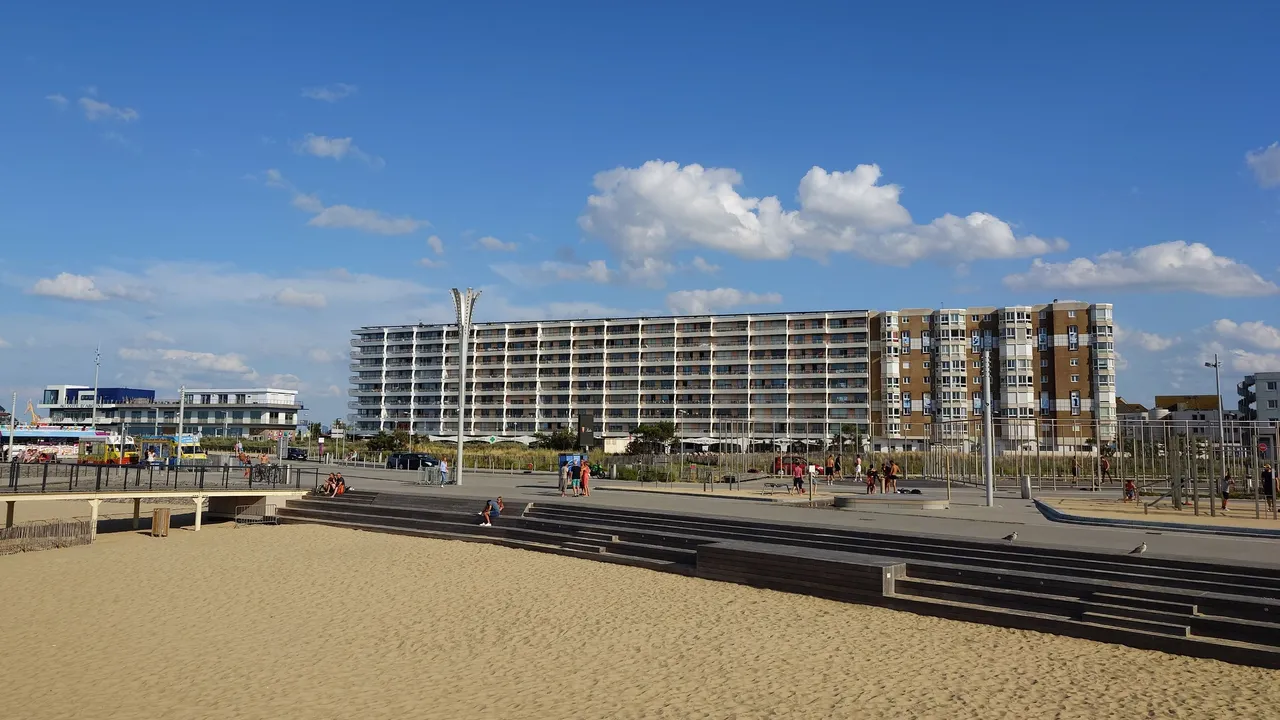
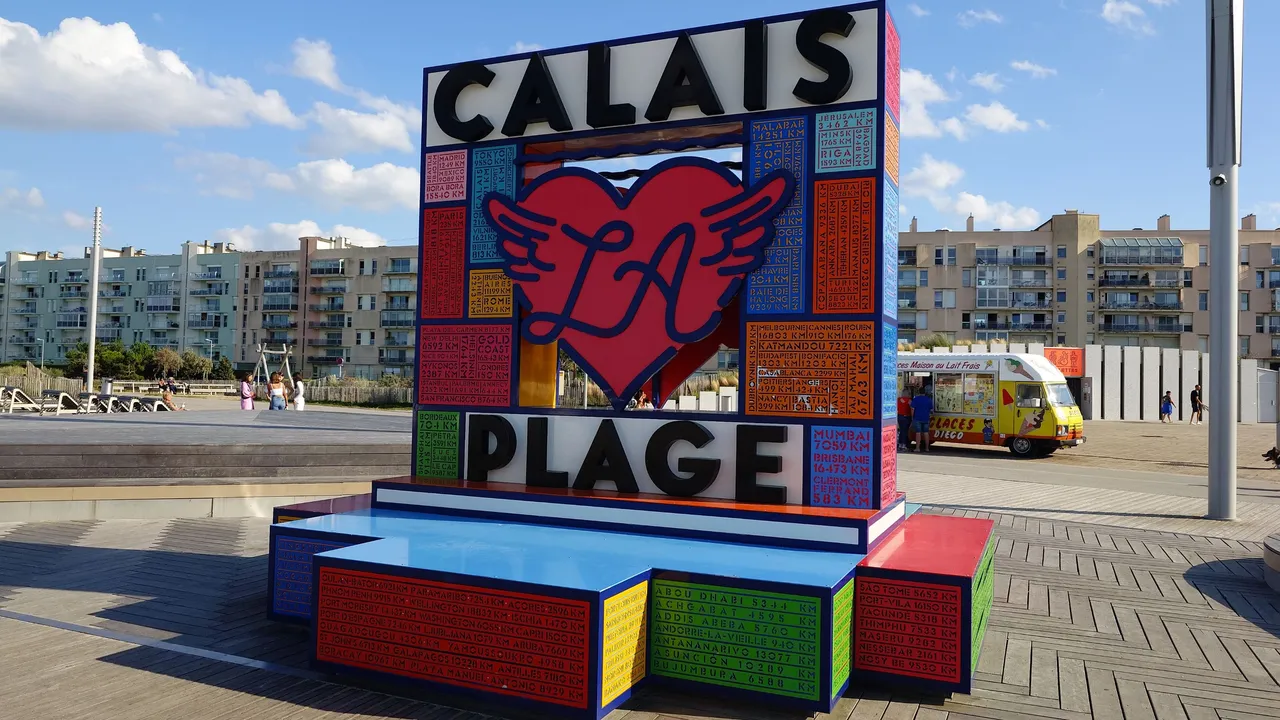
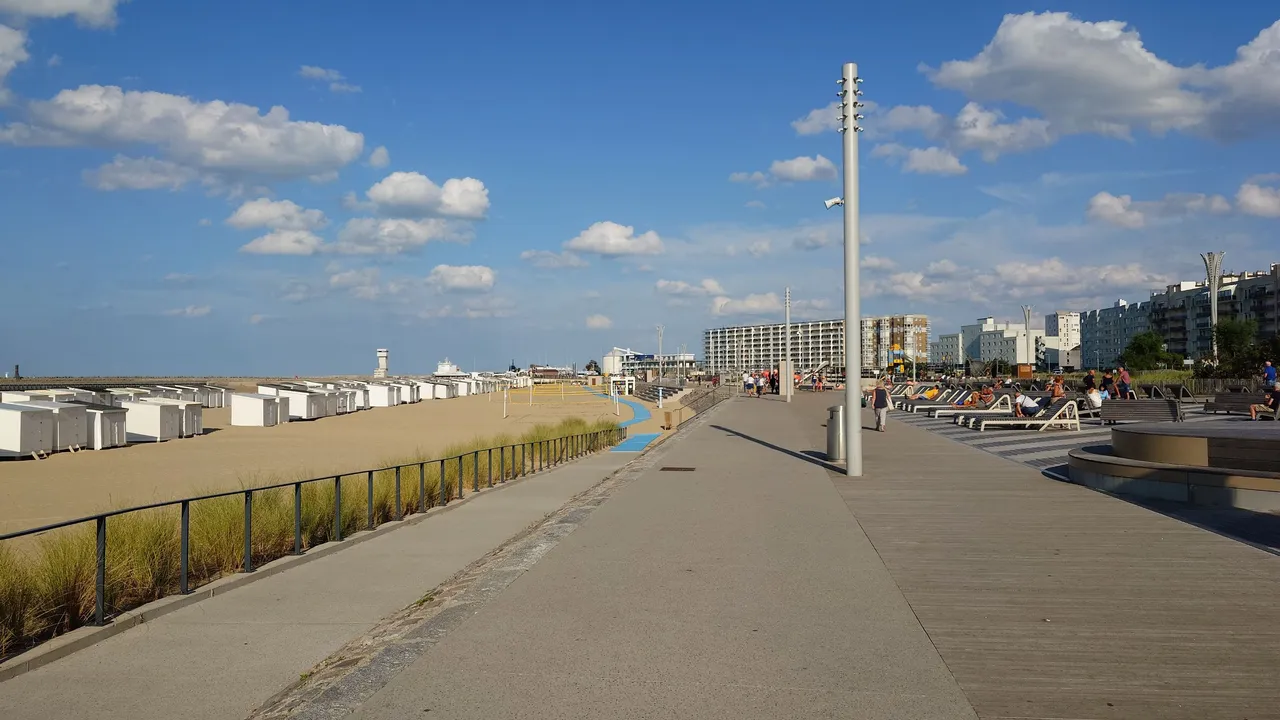
Zachwyciły nas też bardzo realistyczne murale, których wiele dostrzegliśmy na naszej drodze. Z obserwacji miejskiego profilu na Instagramie wiem, że tego lata powstało kilka nowych murali, żeby je wszystkie odnaleźć potrzebowalibyśmy jeszcze jeden dzień.
[ENG] We were also fascinated by the very realistic murals, many of which we spotted along the way. I know from following the city's profile on Instagram that several new murals have been created this summer, but it would take us another day to find them all.
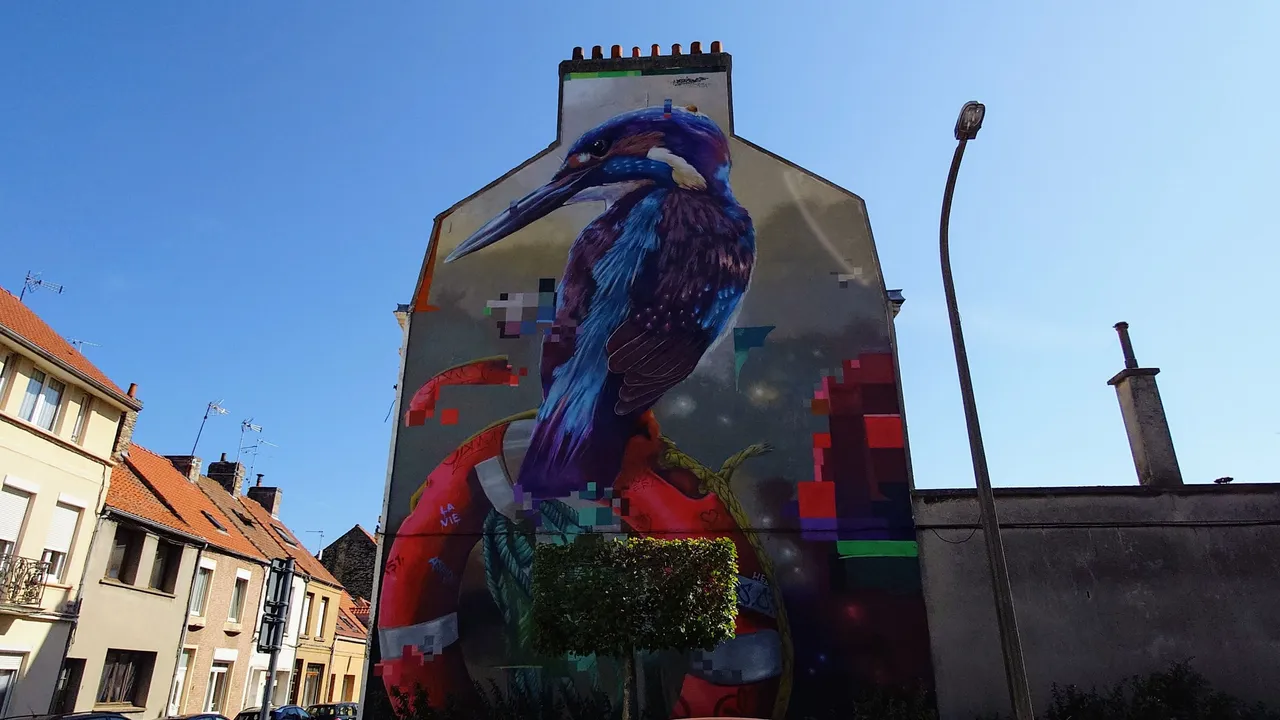
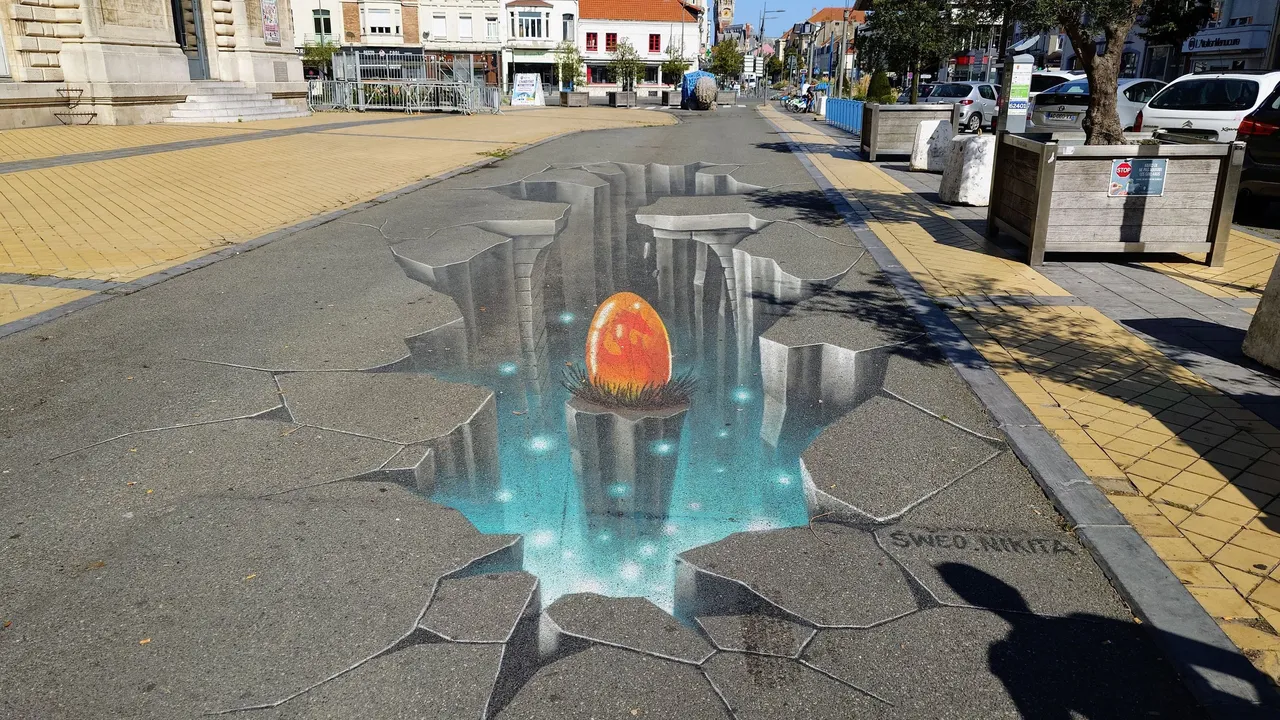


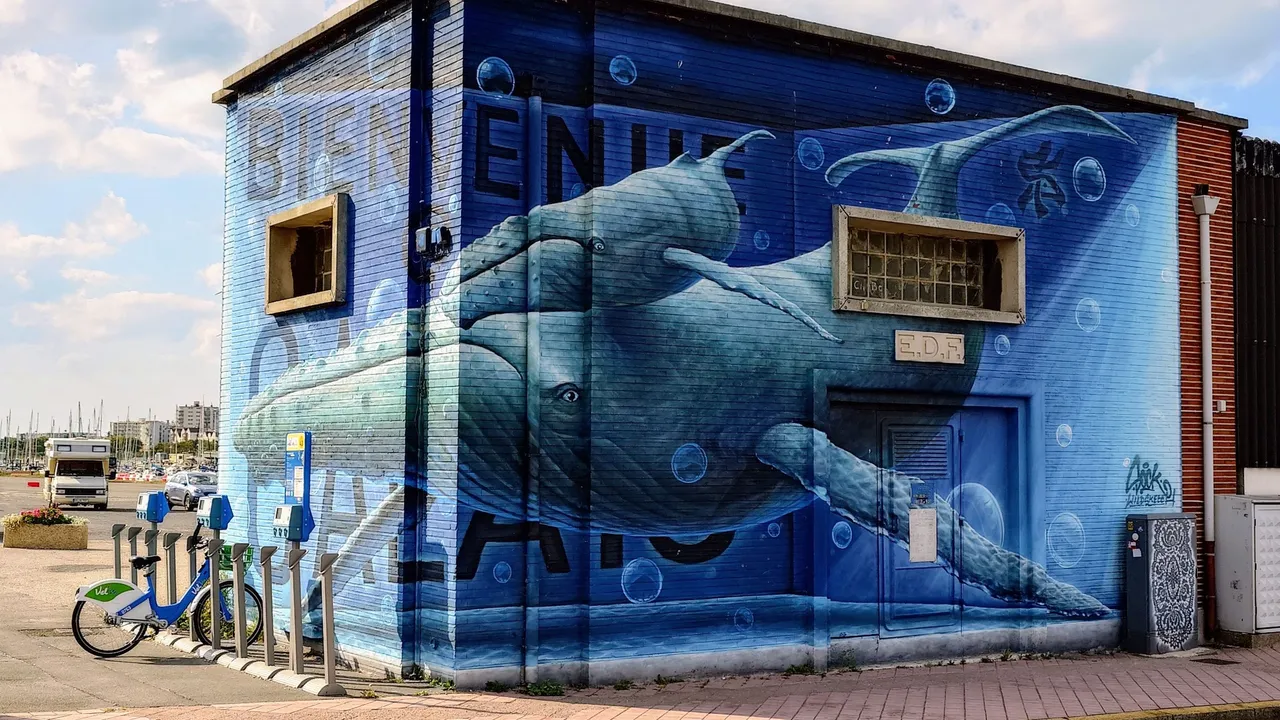

Na koniec warto wspomnieć o bezpieczeństwie. Żona dopiero pod koniec dnia powiedziała mi, że bała się jechać do Calais, bo tyle słyszała w pewnej telewizji o chordach imigrantów, które opanowały miasto. Przez co jest bardzo niebezpiecznie, ale nic z tych rzeczy. Calais jest jak najbardziej bezpiecznym miastem, co prawda widzieliśmy kilku potencjalnych imigrantów, którzy odpoczywali w parku lub żebrali na ulicy, ale nie stanowili oni żadnego zagrożenia. Odmowa pomocy była przyjmowana z uśmiechem i zrozumieniem.
[ENG] Finally, there is the issue of security. It was only at the end of the day that my wife told me she was afraid to go to Calais because she had heard so much on television about the crowds of migrants that had overrun the town. That makes it very dangerous, but nothing of the sort. Calais is as safe as it gets, although we did see a few potential migrants resting in the park or begging in the streets, they posed no threat. Refusal to help was met with a smile and understanding.
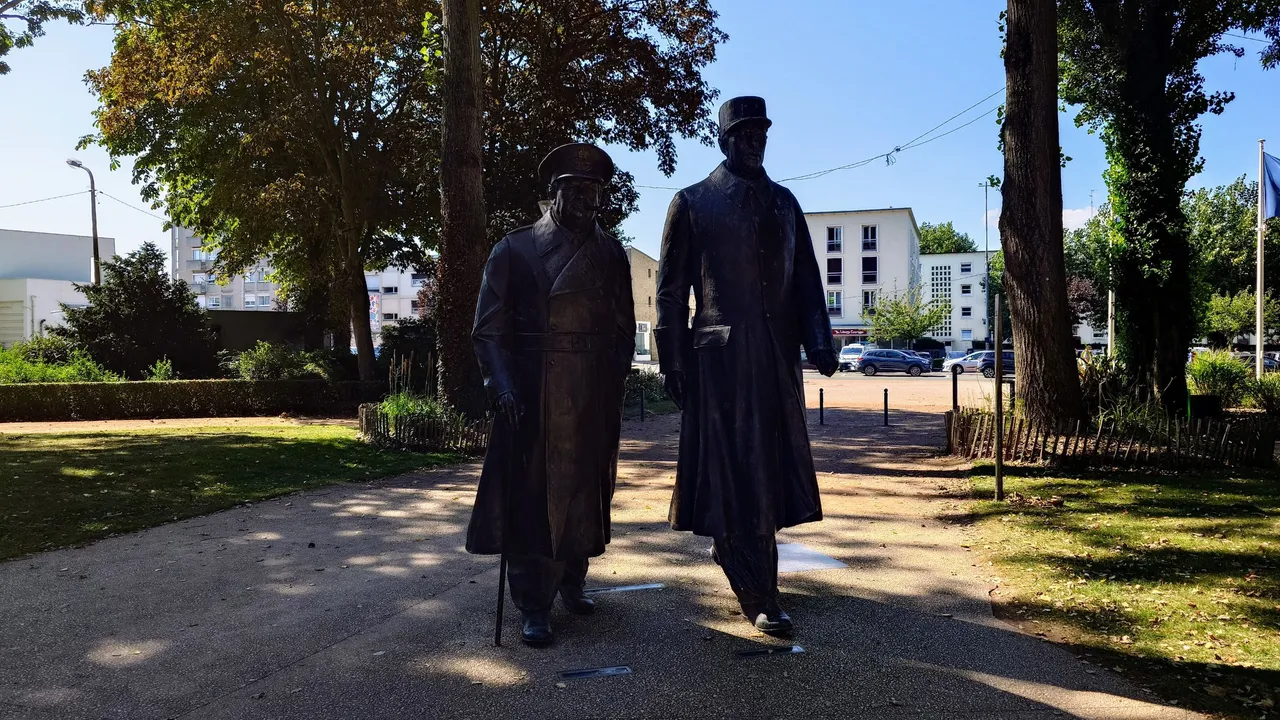
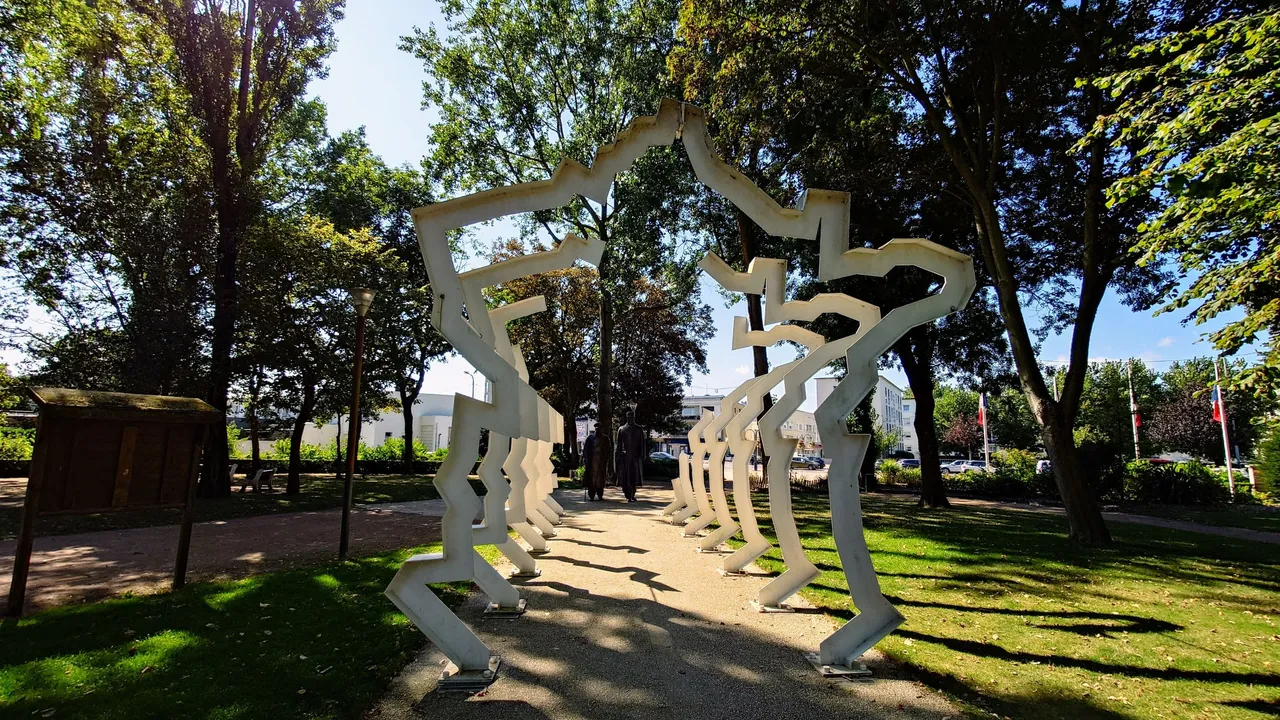
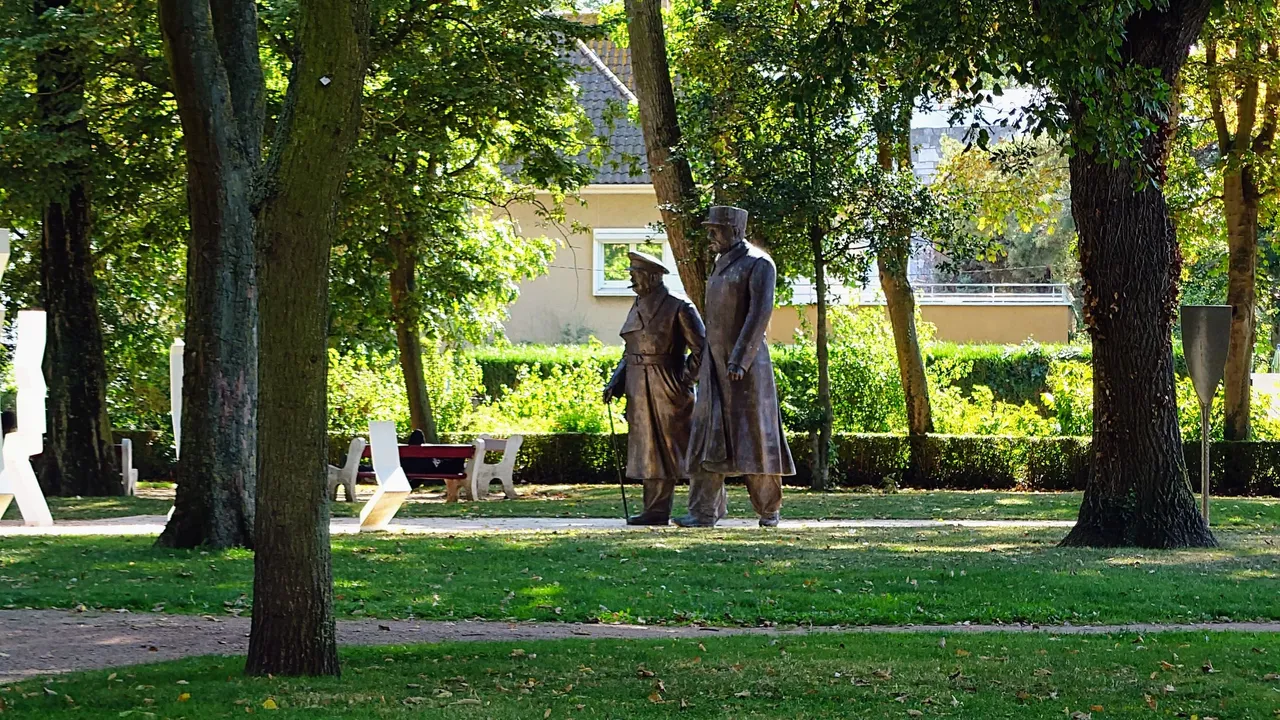


Dystans pokonany w 2023 roku: 3309,49 km - z podziałem na dyscypliny:
| Dyscyplina | Dystans |
|---|---|
| Spacer / Marsz / Nordic Walking | 2139,76 km (+19,10 km) |
| Kolarstwo / Rower MTB | 736,47 km |
| Jogging / Bieganie | 327,18 km |
| Ergometr wioślarski | 35,37 km |
| Orbitrek | 72,72 km |
| wander.earth 2023 | 338,85 km (+9,81 km) |

This report was published via Actifit app (Android | iOS). Check out the original version here on actifit.io






